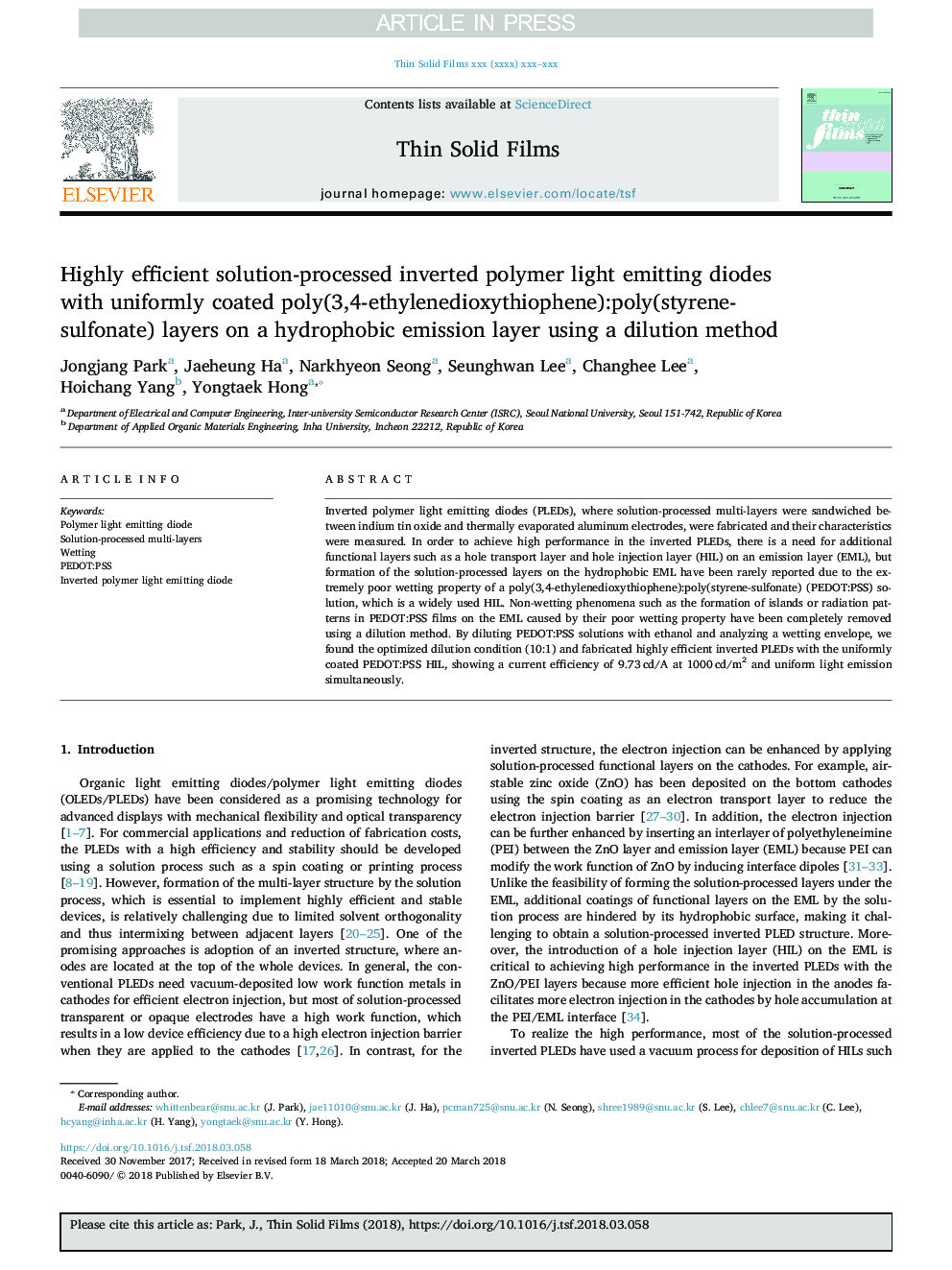| Article ID | Journal | Published Year | Pages | File Type |
|---|---|---|---|---|
| 8032609 | Thin Solid Films | 2018 | 7 Pages |
Abstract
Inverted polymer light emitting diodes (PLEDs), where solution-processed multi-layers were sandwiched between indium tin oxide and thermally evaporated aluminum electrodes, were fabricated and their characteristics were measured. In order to achieve high performance in the inverted PLEDs, there is a need for additional functional layers such as a hole transport layer and hole injection layer (HIL) on an emission layer (EML), but formation of the solution-processed layers on the hydrophobic EML have been rarely reported due to the extremely poor wetting property of a poly(3,4-ethylenedioxythiophene):poly(styrene-sulfonate) (PEDOT:PSS) solution, which is a widely used HIL. Non-wetting phenomena such as the formation of islands or radiation patterns in PEDOT:PSS films on the EML caused by their poor wetting property have been completely removed using a dilution method. By diluting PEDOT:PSS solutions with ethanol and analyzing a wetting envelope, we found the optimized dilution condition (10:1) and fabricated highly efficient inverted PLEDs with the uniformly coated PEDOT:PSS HIL, showing a current efficiency of 9.73â¯cd/A at 1000â¯cd/m2 and uniform light emission simultaneously.
Related Topics
Physical Sciences and Engineering
Materials Science
Nanotechnology
Authors
Jongjang Park, Jaeheung Ha, Narkhyeon Seong, Seunghwan Lee, Changhee Lee, Hoichang Yang, Yongtaek Hong,
